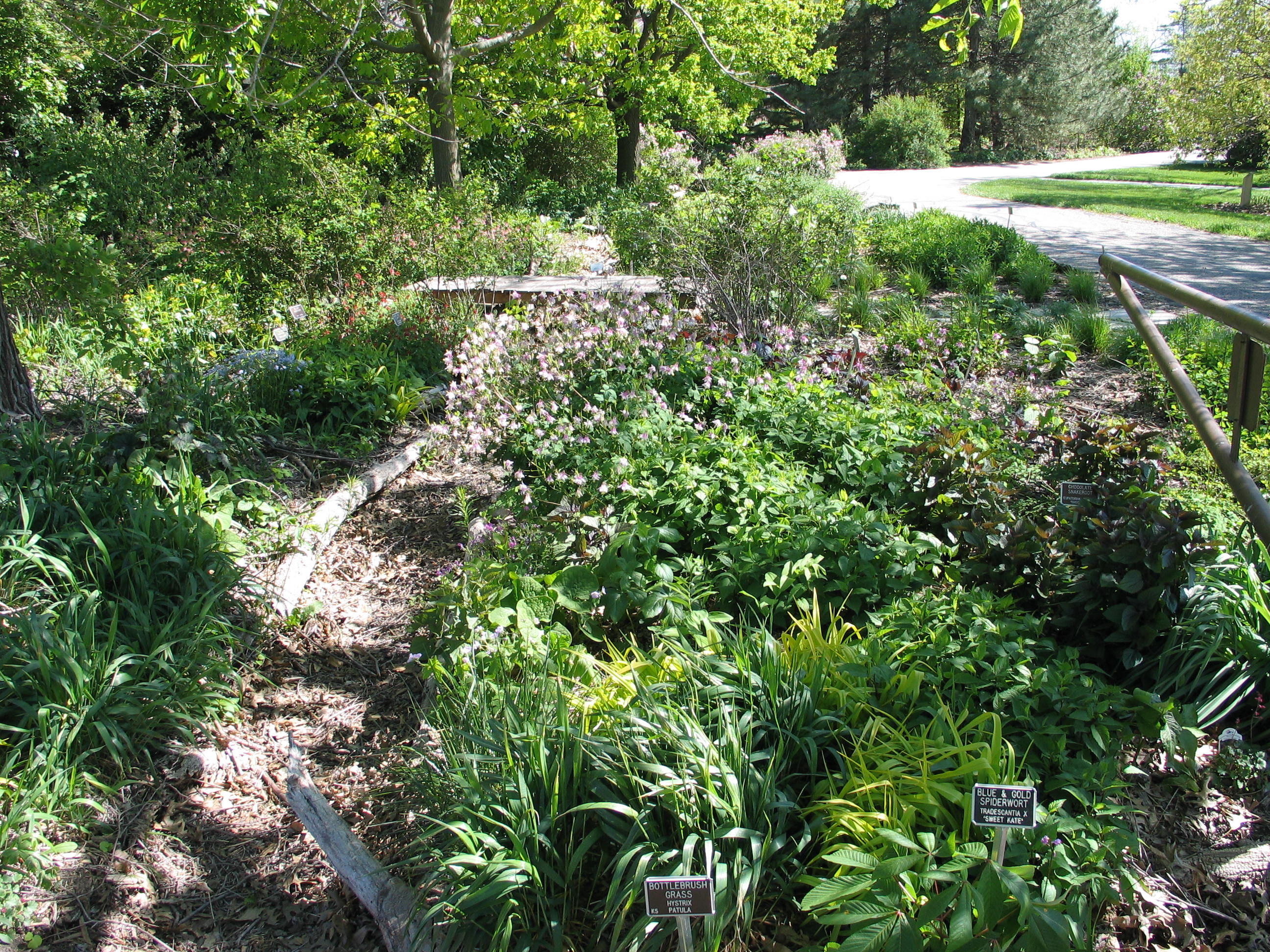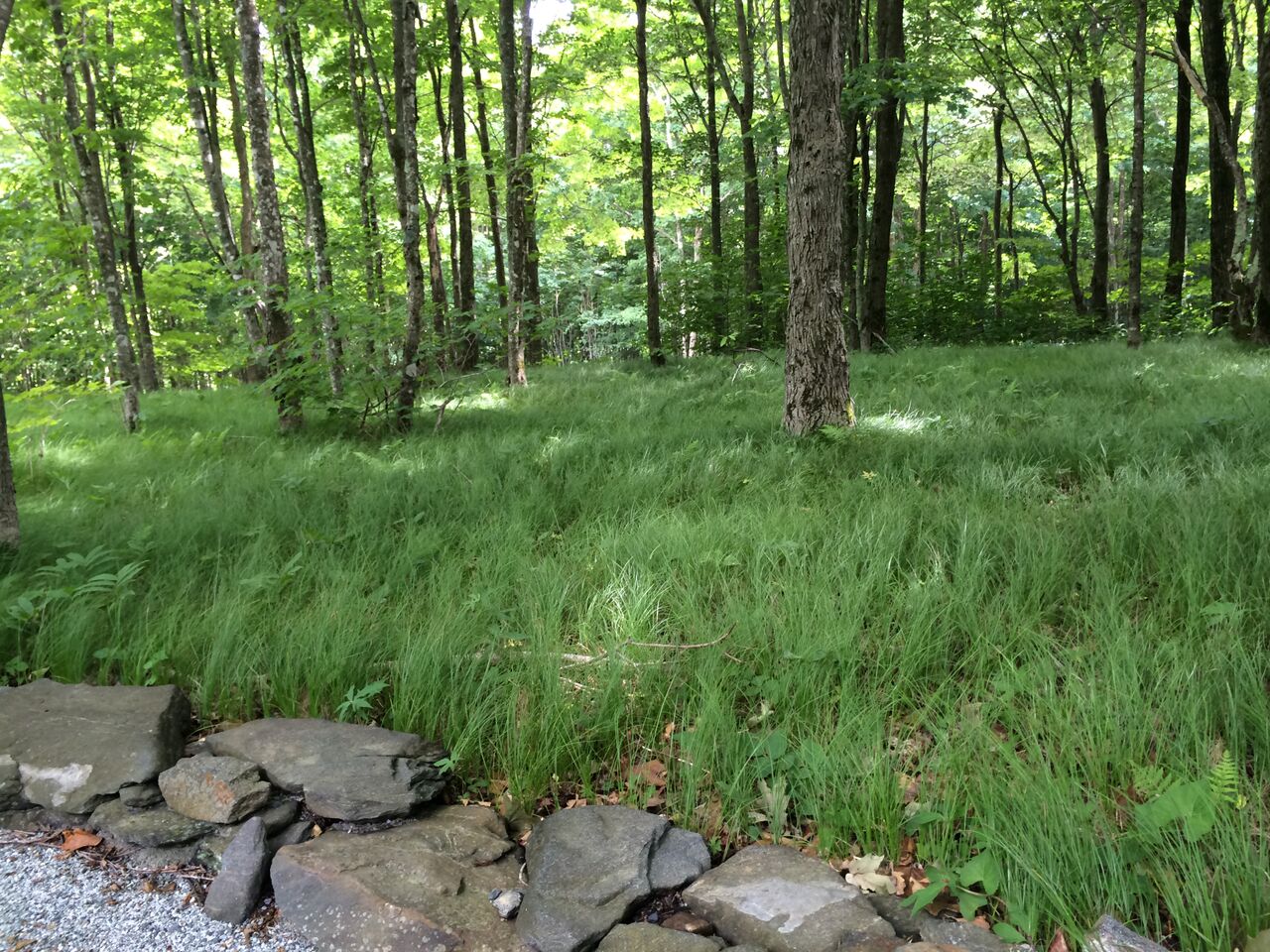In Kansas, the benefits of shade are obvious. If you step outside on a summer afternoon, you will quickly move under the canopy of a large shade tree. The sun can be intense. We love the shade that trees provide, as well as the value they add to our homes. However, it can be a real challenge to grow anything under the umbrella of trees, including grass.
How do you develop a resilient native shade garden? Here are some steps that might improve this problematic area in your yard and maybe begin to change your approach to gardening in the shade.
Shade can be bad
Realize the challenges of a shady spot
- The root competition
- Too much leaf litter and debris
- Reduced air movement make it difficult to establish a beautiful landscape
- Plants rarely bloom
- Not as many plants to choose from compared to sunny areas
- Plants grow slowly
Shade can be good
Since we love the trees in our landscapes, we need to embrace the microclimate they provide.
- Shady landscapes are easy to care for since they require minimal weeding and watering.
- Generally, there are fewer insect problems.
- The canopy of the trees protects plants from leaf scorch.
- Each autumn, a new set of leaves fall, providing winter protection for plants and a fresh dose of organic matter for the soil as the leaves decompose.
Soil and Sun Levels
Discover the type of soil you have and the amount of sunlight your area receives each day. Each of these factors will determine which plants to choose.
- Three to five hours of sun each day is considered partial shade. This can be dappled shade where there is always some light making it through the trees branches
- Two hours or less of sun each day is full shade.
- A soil that is friable is usually high in organic matter. This type of soil is ideal for most plants that grow in the shade.
- A sandy soil that is hard and dries quickly is typically found under oak and maple trees with dense shade.
Use Nature As Your Guide
One of the best ways to landscape for shade is to mimic nature. Look at examples from woodland settings, then integrate the elements and plants you like the most. Generally, these landscapes are random and informal with three to four distinct layers of plants. Large trees make up the upper canopy that provide the majority of shade. Next, smaller trees and large shrubs of varying heights make up the understory. Use this plant layer to add interesting forms, textures and blooms. Redbuds and viburnums, for example, are naturals for these areas. The woodland floor is the final layer. Lower growing woody and herbaceous species with graceful blooms, a variety of leaf shapes, attractive fruits and seed heads, varying heights and forms, and contrasting bright and dark colors will add to the appeal of this layer as you view it up close.
The starting point for your shade garden is to examine what is already growing. Most shade gardens have the umbrella of large trees. The middle and ground floor need to be filled with appropriate plant material that match the soil, moisture levels and amount of sunlight the area receives throughout the day. Shade gardens lend themselves to solitude because they are usually enclosed by plants . They are a natural oasis with a bench, water feature or fire pit surrounded by interesting plants. Here is a plant guide for each of these lower tiers of a shade garden. For our purposes, I will focus on plants for a medium to dry soil, with the ultimate goal to develop an area that is attractive to you and wildlife, such as birds and pollinators.
Native perennials for the Woodland Floor
Allium cernuum pink nodding onion
Anthyrium angustum lady fern
Aquilegia canadensis columbine
Arisaema triphyllum jack-in-the-pulpit
Aruncus dioicus goatsbeard
Asarum canadense wild ginger
Aster cordifolius blue woodland aster
Aster divaricatus ‘Eastern Star’ white woodland aster
Aster lateriflorus calico Aster
Carex sp. Woodland sedge
Clematis virginiana virgin’s bower
Chasmanthium latifolium river oats (Use with caution)
Chrysogonum virginianum green and gold
Dennstaedtia punctilobula hay-scented fern
Dicentra eximia fringed bleeding heart
Dodecatheon meadia shootingstar
Epimedium spp. barrenwort
Geranium maculatum wild geranium
Heuchera Americana alumroot
Histrix patula bottlebrush grass
Pachysandra procumbens Allegheny spurge
Packera aurea golden ragwort
Phlox divaricata woodland phlox
Podophyllum peltatum May apple
Polygonatum biflorum giant solomon’s seal
Sanguinaria canadensis bloodroot
Sedum ternatum wild stonecrop
Smilacina racemose solomon’s Plume
Solidago caesia wreath goldenrod
Solidago ulmifolia elm-leaf goldenrod
Stylophorum diphyllum celadine poppy
Tiarella cordifolia foamflower
Veronicastrum virginicum culver’s root
Zizia aurea golden alexander
Small trees and shrubs
Aesculus glabrra var. argute Texas buckeye
Aronia melanocarpa ‘Autumn Magic’
Cercis canadensis-redbud
Cephalanthus occidentalis buttonbush
Cornus racemosa gray dogwood
Hamamelis witchhazel
Hydrangea arborescens ‘Annabelle’
Hydrangea quercifolia oakleaf hydrangea
Lindera benzoin spicebush
Physocarpus opulifolius ninebark
Rjus typhina ‘Bailtiger’ Tiger Eye sumac
Symphoricarpos albus snowberry
Viburnum dentatum arrowwood viburnum
Viburnum prunifoium blackhaw viburnum
Viburnum rufidulum rusty blackhaw viburnum
Viburnum trilobum highbush cranberry

My shade garden project: I started with a fire pit under a 50 year old pin oak tree. It is essentially bare soil because nothing will grow under it very well. I will chart the progress over the next few years.
So, my advice to you is this: Accept your shady situation. Mix it up. Combine plants with different textures, colors, shapes and heights to add interest. Knowing your light levels will help, too. Keep in mind that shade plants grow slowly. Choose larger plants initially to install or just be patient with what you have planted. Water as needed, but remember these shade plants are competing with the roots of a large tree. Maybe add a soaker hose to deliver moisture efficiently to the root zone. And finally, look to enhance all the layers of the shade garden, not just the lowest level. A native garden looks better when it mirrors the natural woods with all three dimensions growing harmoniously together.




